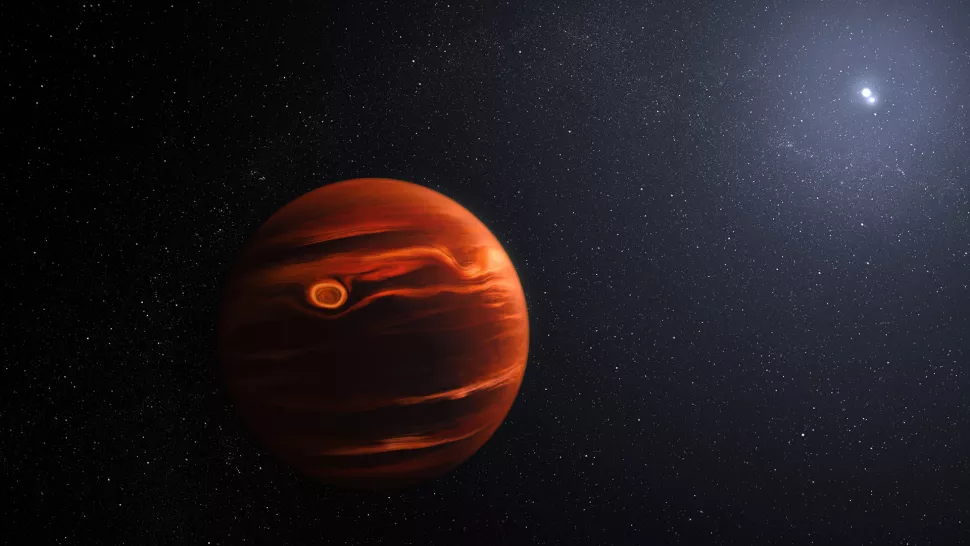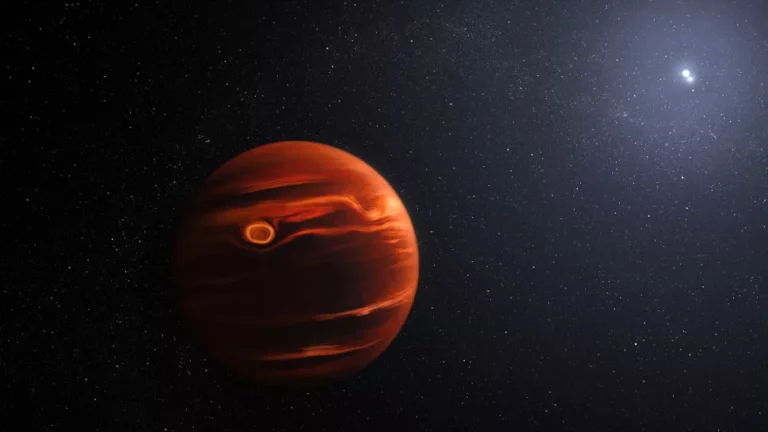Webb Telescope detects ‘turbulent’ clouds on huge exoplanet that orbits 2 stars
VHS 1256 b is a strange world indeed, with double suns like Tatooine.
Once again, NASA’s groundbreaking James Webb Space Telescope (JWST) has made a remarkable discovery. In a recent publication in Astrophysical Journal Letters, the advanced observatory peered into the atmosphere of a massive exoplanet, VHS 1256 b, which orbits two suns and resembles Tatooine from “Star Wars”.
JWST’s innovative technology allowed it to obtain detailed spectra of the planet, enabling scientists to determine its composition. This is the first time the telescope has employed the direct imaging method to gather light from the exoplanet itself, revealing a tumultuous world with turbulent clouds consisting of silicates, similar to sand on Earth. The report sheds light on the exoplanet’s intriguing, albeit unpleasant weather conditions.

Located approximately 40 light-years away from Earth, VHS 1256b is a peculiar exoplanet that differs significantly from our blue planet. It has a mass approximately 19 times that of Jupiter and orbits two stars instead of one, completing one orbit every nearly 10,000 years.
According to lead author Brittany Miles, an astrophysicist at the University of Arizona, VHS 1256 b is an excellent target for the James Webb Space Telescope because it is situated roughly four times farther away from its stars than Pluto is from our sun. Consequently, the planet’s light is not mixed with that of its stars, making it easier to study. The recent study published in Astrophysical Journal Letters reports that the telescope’s spectra showed evidence of silicate clouds in the exoplanet’s atmosphere.
These clouds occasionally fall into the planet’s depths, moving around in an atmosphere as hot as a flame, with temperatures soaring up to 1,500 degrees Fahrenheit (815 degrees Celsius). These silicate clouds are similar to hot sand and have no comparable equivalent on Earth, although the finer grains in the exoplanet’s atmosphere are comparable to tiny particles in smoke, while the larger grains are similar to small, hot sand particles, according to Beth Biller, an astrophysicist at the University of Edinburgh and part of the research team.
In addition, the team discovered water, methane, carbon monoxide, and carbon dioxide on VHS 1256b, indicating a wide range of chemicals. According to the press release, this discovery represents the “largest number of molecules ever identified all at once on a planet outside our solar system.” The team is still in the process of analyzing these detected particles, refining their models to understand the turbulent atmosphere of this exoplanet. Lead author Brittany Miles stated that this is just the beginning of a massive modeling effort to interpret the intricate data collected by the James Webb Space Telescope, and it is not the final conclusion on the planet.
Do not forget to share your opinion with us to provide you with the best posts !




0 Comments